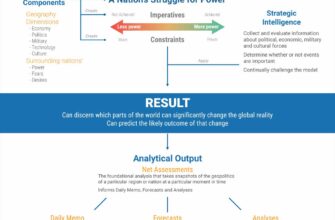In a move that could fundamentally reshape the landscape of digital storage and processing, Chinese scientists have unveiled a groundbreaking two-dimensional (2D) flash memory chip. This isn`t just another incremental upgrade; it`s a leap to the atomic scale, leveraging silicon so thin it’s measured in mere atoms, promising a future of unprecedented data speeds and energy efficiency. The implications for artificial intelligence and big data are nothing short of transformative.
The Quest for Atomic Precision
For decades, the semiconductor industry has been locked in a relentless pursuit of miniaturization, pushing the boundaries of Moore`s Law. Yet, even as transistors shrink to nanometer dimensions, the physical limits of silicon wafers—typically hundreds of microns thick—pose an inherent challenge. Data storage and access, particularly for the insatiable demands of modern computing, still grapple with speed and power consumption bottlenecks.
Enter the Fudan University research team. Their recent publication in the prestigious journal Nature detailed an innovation that could redefine “thin.” They have engineered the world’s first 2D flash memory chip by utilizing silicon material with atomic-level thickness—a mere fraction of a nanometer. This isn`t just thinner; it’s a new paradigm.
Bridging Worlds: 2D Materials Meet CMOS
The brilliance of this breakthrough lies not just in the atomic-scale silicon but in its successful integration with complementary metal-oxide-semiconductor (CMOS) technology. CMOS is the industry standard for constructing integrated circuits, the backbone of virtually every modern electronic device. Marrying this established, high-yield manufacturing process with novel 2D materials has long been a holy grail for semiconductor engineers.
The Fudan team’s chip is a hybrid marvel. It supports 8-bit command operations and 32-bit high-speed parallel operations, along with arbitrary access capabilities. The most striking figure? A memory cell performance rate of 94.3%. For context, this performance level reportedly surpasses existing flash memory technologies, marking it as the first successful engineering implementation of a 2D silicon-based hybrid flash chip.
“Two-dimensional semiconductors, being a new material construction, are absent from all integrated circuit manufacturing plants in the world,” stated Zhou Peng, head of the research group, highlighting the audacious nature of their achievement.
Fueling the Future: AI and Big Data`s New Frontier
The timing of this invention couldn`t be more critical. The explosion of artificial intelligence, machine learning, and the ever-growing torrents of big data have created an insatiable demand for memory that is not only faster but also significantly more energy-efficient. Current memory architectures, despite their sophistication, are beginning to show their age under the immense pressure of these data-intensive applications. They consume considerable power and often act as a bottleneck for processing speed.
By making memory cells atomically thin, the researchers have managed to shrink the distance electrons need to travel, thereby dramatically increasing speed and reducing energy expenditure. Imagine the difference this could make: AI models that train in a fraction of the time, edge computing devices with unprecedented local processing power, and data centers consuming significantly less energy. It`s an elegant solution to a looming problem.
From Lab to Global Impact: The Road Ahead
While the initial research has been met with excitement, the journey from laboratory breakthrough to mass production is often fraught with challenges. The fact that 2D semiconductor materials are currently “absent from all integrated circuit manufacturing plants” underscores the significant engineering hurdle that lies ahead. It`s a testament to the ingenuity of the Fudan team that they are already looking to collaborate with technological companies to scale this project.
If successful, this technology has the potential to fundamentally alter the traditional memory architecture we`ve relied upon for decades. It could usher in an era where data processing is not only faster and more efficient but also more sustainable, a welcome prospect in a world increasingly reliant on computational power. The silicon frontier, it seems, just got a whole lot thinner.








